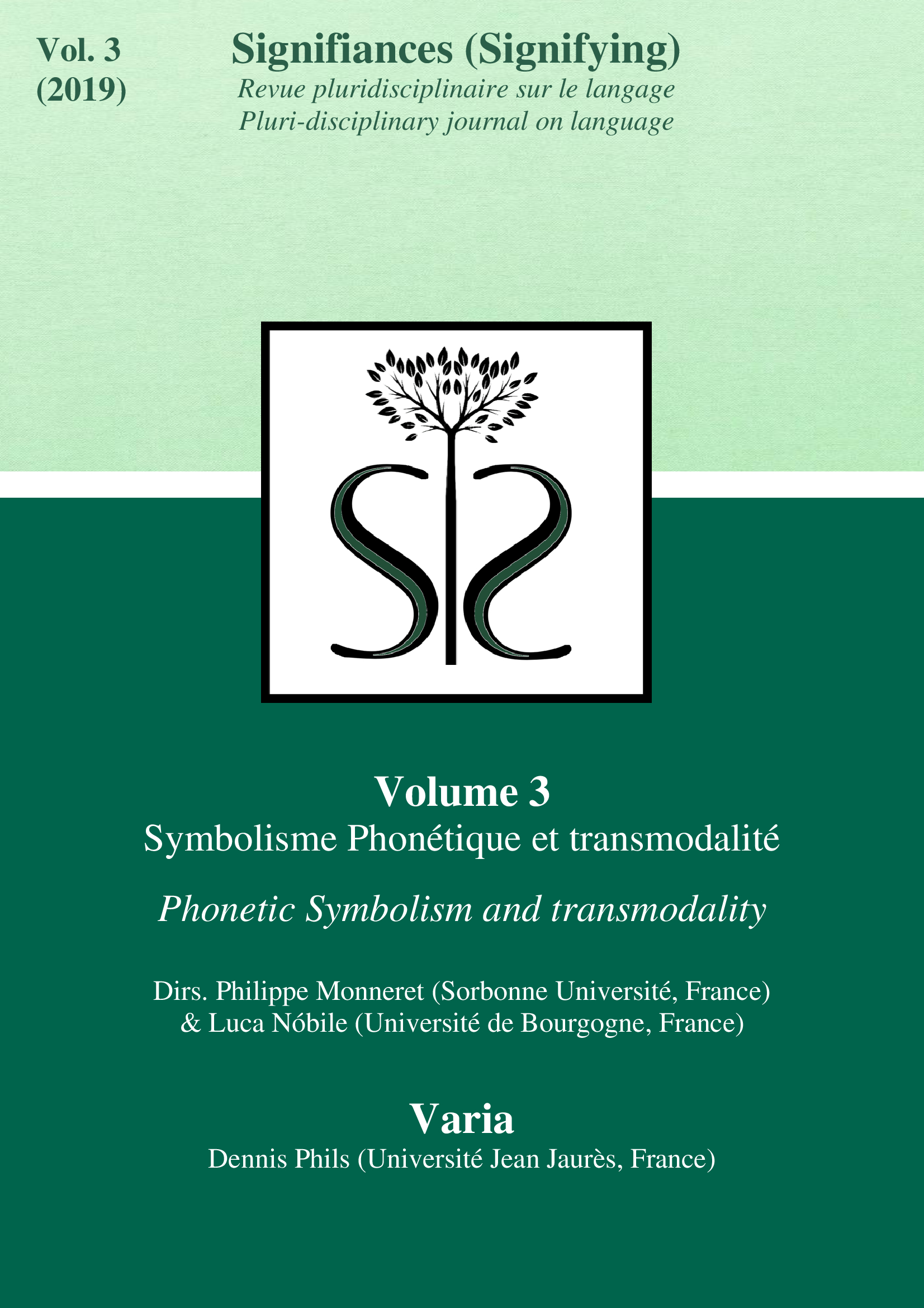Sound symbolism, speech expressivity and crossmodality
DOI :
https://doi.org/10.52497/signifiances.v3i1.234Résumé
The direct links existing between sound and meaning which characterize sound symbolism can be thought of as mainly related to two kinds of phenomena: sound iconicity and sound metaphors. The first refers to the mirror relations established between sound and meaning effects (Nobile, 2011) and the latter as coined by Fonagy (1983) refers to the relationships based on analogies between meaning and speech sound production characteristics. Four relevant codes to the study of sound symbolism phenomena have been mentioned in the phonetic literature: the frequency code (Ohala, 1994), the respiratory code, the effort code (Gussenhoven, 2002) and the sirenic code (Gussenhoven, 2016). In the present work sound symbolism is taken to be the basis of speech expressivity because the meaning effects attributed to the spoken mode by the listeners are thought to be based on the acoustic features of sounds deriving from the various articulatory maneuvers yielding breath, voice, noise, resonance and silence. Based on the impression caused by the acoustic features, listeners attribute physiological, physical, psychological and social characteristics to speakers. In this way, speech can be considered both expressive and impressive, because it is used to convey meaning effects but it also impress listeners. Both segmental and prosodic elements are used to express meaning effects in speech. Among the prosodic elements vocal quality settings have received less attention regarding speech expressive uses. We argue that the investigation of the expressive uses of voice quality settings can be better approached if these settings are grouped according to their shared acoustic output properties and vocal tract configurations. Results of experiments relating symbolic uses of vocal qualities to semantic, acoustic and visual features by means of multidimensional analysis are reported and the expressive and impressive roles of vocal quality settings in spoken communication are discussed in relation to motivated links between sound forms and meaning effects.
KEY WORDS: sound and meaning; sound symbolism; speech expressivity; voice quality; acoustic analysis; perceptual analysis.


